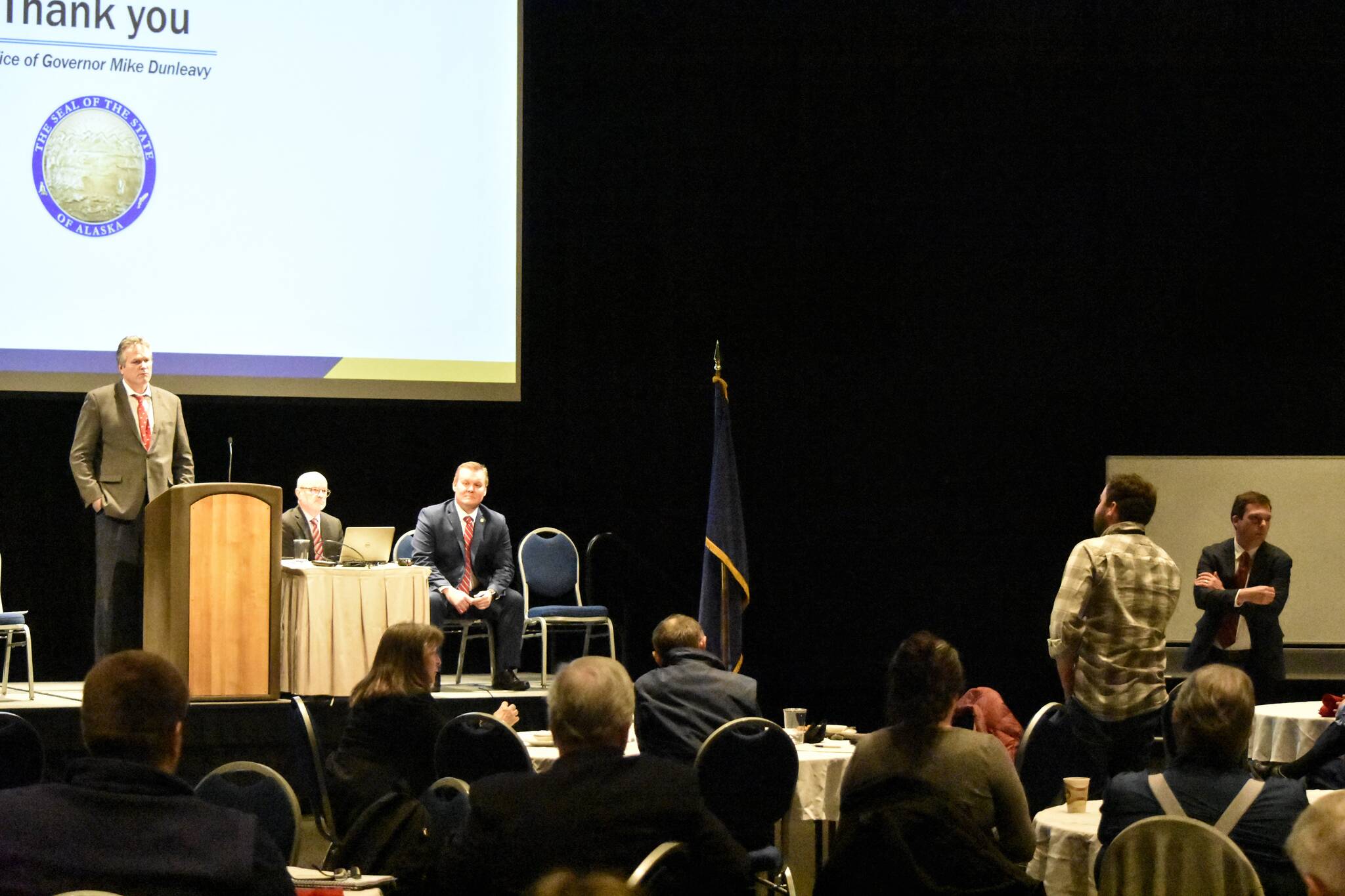Gov. Mike Dunleavy presented a vision of a state on the rise in a speech to the Alaska Municipal League and Alaska Conference of Mayors’ winter meeting.
Speaking Thursday to municipal leaders from around the state at Centennial Hall, Dunleavy said the state had paid down its debts and was looking at considerable revenues, both from the high price of oil and the performance of the Permanent Fund dividend.
“Our vision is a stable, predictable Alaska, so everyone knows where we’re going to be in a year, two years, five years,” Dunleavy said. “We’ve just got to make sure we can agree on policy moving forward.”
Because of the state’s positive financial projections, Dunleavy said his focus was now on creating a stable future for the state.
However, some state lawmakers have been critical of Dunleavy’s proposed budget, noting that one-time federal relief dollars have been used to fund some annual costs to the state, such as the Alaska Marine Highway System. The high price of oil was bolstering state revenues, but several lawmakers have said the state still needs to agree on a long-term fiscal solution.
Dunleavy told the conference he will submit several bills to the Alaska State Legislature meant to build infrastructure for the state’s future. Among those bills would be legislation to improve the state’s independence in the production of food and manufacturing, and to improve energy costs in rural parts of the state.
The governor also made his case for $325 million in general obligation bonds meant for state infrastructure projects. Interest rates were currently low but expected to rise due to inflation, Dunleavy said, and the state should secure loans at those low-interest rates. The flexibility state-financed projects have could be used to augment the timing of the federally funded projects expected to come to the state through the Bipartisan Infrastructure Law.
“It makes sense to invest and allow the people of Alaska to have a say in this,” Dunleavy said, noting that any bonds first be approved by voters. “I think we have a real opportunity here.”
Dunleavy presented a list of 14 projects to be funded by bonds, but noted the list of projects could be changed by the Legislature. The most expensive projects on the governor’s list are $175 million for Knik Arm Ports, $25 million for the Juneau Access Road and $22 million for medical district access at the University of Alaska Anchorage.
Conference attendees voiced concern to the governor about the future cost of maintenance for infrastructure projects and the ability to retain workers to build and administer them. The governor acknowledged the issue was affecting the entire country and suggested reforming the state’s licensing and permitting laws.
In an interview with the Empire, City and Borough of Juneau Finance Director Jeff Rogers said he wasn’t necessarily opposed to taking on new bond debt, but added other fixes to the state’s finances would have to take place as well.
The governor described the state’s finances with similar optimism in his State of the State address, a characterization met with mixed reaction from the Legislature.
Contact reporter Peter Segall at psegall@juneauempire.com. Follow him on Twitter at @SegallJnuEmpire.


